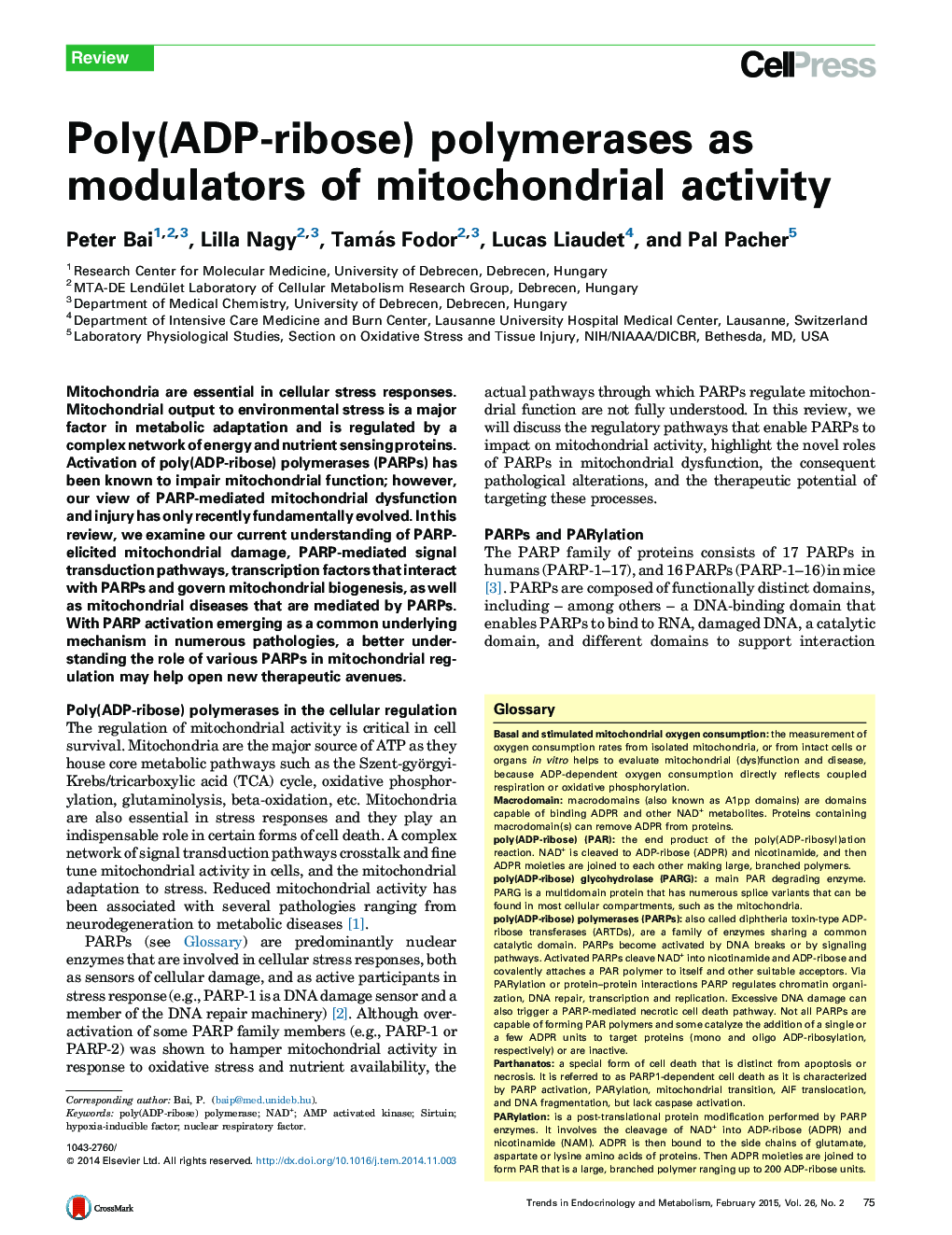| Article ID | Journal | Published Year | Pages | File Type |
|---|---|---|---|---|
| 2810243 | Trends in Endocrinology & Metabolism | 2015 | 9 Pages |
•Activation of poly(ADP-ribose) polymerases-1 and -2 (PARP-1 and PARP-2) deteriorates mitochondrial activity.•NAD+ and ATP degradation are not coupled to each other upon PARP activation.•PARPs interact with transcription factors modulating mitochondrial activity.•PARPs can be positive regulators of mitochondrial output under sublethal stress.•PARP inhibition is an attractive target for treating mitochondrial dysfunction.
Mitochondria are essential in cellular stress responses. Mitochondrial output to environmental stress is a major factor in metabolic adaptation and is regulated by a complex network of energy and nutrient sensing proteins. Activation of poly(ADP-ribose) polymerases (PARPs) has been known to impair mitochondrial function; however, our view of PARP-mediated mitochondrial dysfunction and injury has only recently fundamentally evolved. In this review, we examine our current understanding of PARP-elicited mitochondrial damage, PARP-mediated signal transduction pathways, transcription factors that interact with PARPs and govern mitochondrial biogenesis, as well as mitochondrial diseases that are mediated by PARPs. With PARP activation emerging as a common underlying mechanism in numerous pathologies, a better understanding the role of various PARPs in mitochondrial regulation may help open new therapeutic avenues.
